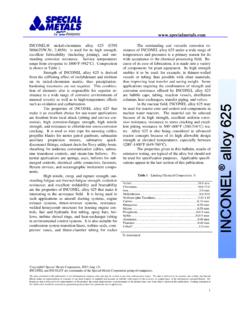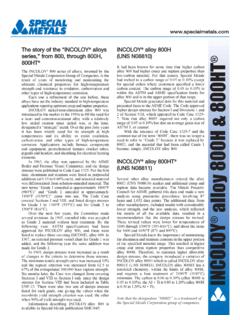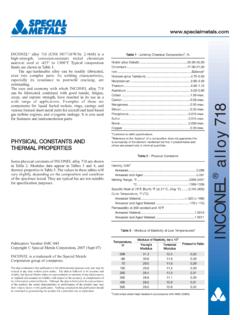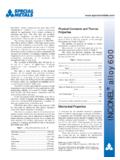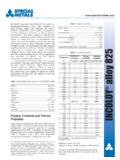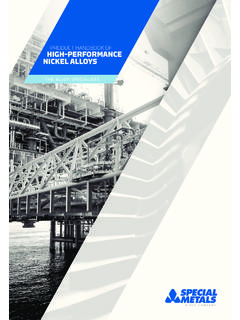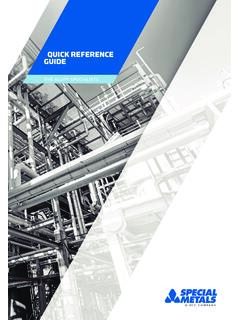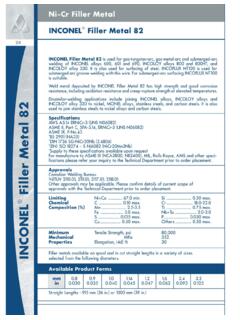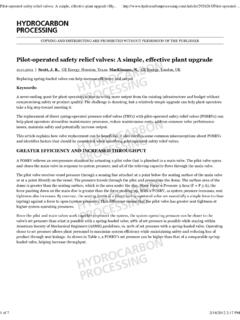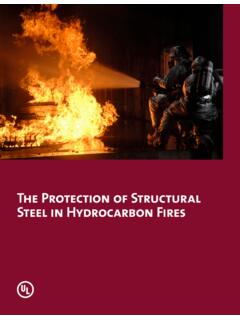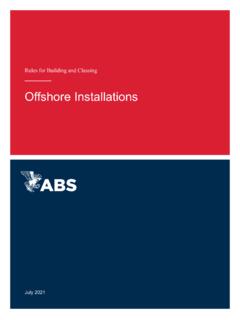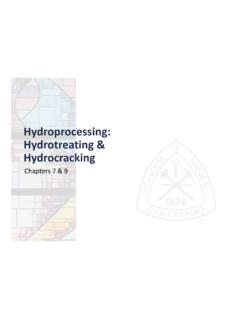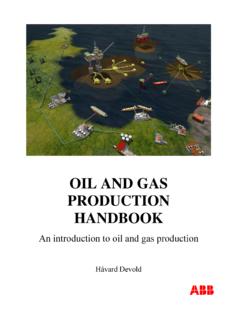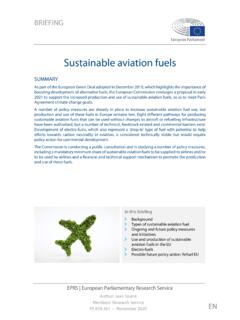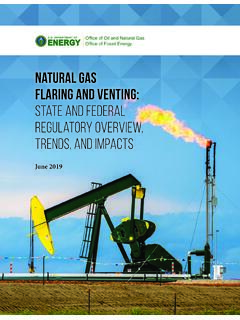Transcription of 800H & HT Web - Special Metals Corporation
1 INCOLOY alloy 800h & 800HT ssttoorryy ooff tthhee IINNCCOOLLOOYY aallllooyysssseerriieess,, ffrroomm 880000,, tthhrroouugghh 880000HH,,880000 HHTT The INCOLOY 800 series of alloys, invented by theSpecial Metals Corporation Group of Companies, is theresult of years of monitoring and maintaining theultimate chemical properties for high-temperaturestrength and resistance to oxidation, carburization andother types of high-temperature one a refinement of the one before, thesealloys have set the industry standard in high-temperatureapplications requiring optimum creep and rupture nickel-iron-chromium alloy 800 wasintroduced to the market in the 1950s to fill the need fora heat- and corrosion-resistant alloy with a relativelylow nickel content since nickel was, at the time,designated a strategic metal.
2 Over the past forty yearsit has been widely used for its strength at hightemperatures and its ability to resist oxidation,carburization, and other types of high-temperaturecorrosion. Applications include furnace componentsand equipment, petrochemical furnace cracker tubes,pigtails and headers, and sheathing for electrical 1963, the alloy was approved by the ASMEB oiler and Pressure Vessel Committee, and the designstresses were published in Code Case 1325. For the firsttime, aluminum and titanium were listed as purposefuladditions (at to each), and annealed materialwas differentiated from solution-annealed material. Thenew terms Grade 1 annealed at approximately 1800 F(980 C) and Grade 2, annealed at approximately2100 F (1150 C) came into use.
3 The Code Casecovered Sections I and VIII, and listed design stressesfor Grade 1 to 1100 F (593 C) and for Grade 2 to1500 F (816 C).Over the next few years, the Committee madeseveral revisions. In 1965, extruded tube was acceptedas Grade 2 material without heat treatment. By thefollowing year, ASTM specifications had beenapproved for INCOLOY alloy 800, and these werelisted to replace those covering INCONEL alloy 600. In1967, an external pressure vessel chart for Grade 1 wasadded, and the following year the same addition wasmade for Grade 1969, design stresses were increased as a resultof changes in the criteria to determine those minimum tensile strength curve was increased 10%and the rupture criterion was increased from to67% of the extrapolated 100,000 hour rupture months later, the Case was changed from coveringSections I and VIII to Section I only since the designstresses for Section VIII had been included in TableUNF-23.
4 There were also two sets of design stresseslisted for each grade, one giving the values when thetwo-thirds yield strength criterion was used, the otherwhen 90% of yield strength was describing INCOLOY alloy 800 isavailable in Special Metals publication aallllooyy 880000HH((UUNNSS NN0088881100))It had been known for some time that higher carbonalloy 800 had higher creep and rupture properties thanlow-carbon material. For that reason, Special Metalshad melted to a carbon range of to exceptfor Special orders where customers specified a lowercarbon content. The carbon range of to iswithin the ASTM and ASME specification limits foralloy 800 and is in the upper portion of that Metals generated data for this material andpresented them to the ASME Code.
5 The Code approvedhigher design stresses for Section I and Divisions 1 and2 of Section VIII, which appeared in Code Case 1325-7. Note that alloy 800h required not only a carbonrange of to but also an average grain size ofASTM 5, or the issuance of Code Case 1325-7 and thecommon use of the term 800h , there was no longer aneed to refer to Grade 2 because it was replaced by800H, and the material that had been called Grade 1became, simply, INCOLOY alloy aallllooyy 880000 HHTT ((UUNNSS NN0088881111))Several other alloy manufacturers entered the alloy800H (UNS N08810) market and additional creep andrupture data became available. The Metals PropertyCouncil for ASME gathered this data and made a newanalysis using parametric procedures, involving 87heats and 1,052 data points.
6 The additional data, fromother manufacturers, included results with considerablylower strength, and the new analysis, which reflectedthe results of all the available data, resulted in arecommendation that the design stresses be revised values were lower for temperatures of1100 through 1500 F (593-816 C), and about the samefor 1600 and 1650 F (871 and 899 C). Special Metals knew the importance of maintainingthe aluminum and titanium contents in the upper portionof the specified material range. This resulted in highercreep and stress rupture properties than competitivealloy 800h . Therefore, to maintain higher allowabledesign stresses, the company introduced a variation ofINCOLOY alloy 800h which is called INCOLOY alloy800HT (UNS N08811). INCOLOY alloy 800HT has arestricted chemistry, within the limits of alloy 800h ,and requires a heat treatment of 2100 F (1149 C)minimum.
7 The carbon is to (alloy 800h to ), the Al + Ti is to (alloy 800 His to Al + Ti).Note that the designation 800HT is a trademark ofthe Special Metals Corporation group of aallllooyy 880000HH && 880000 HHTT 2 TTaabbllee 11- Limiting Chemical Compositions, %, for INCOLOY alloys 800, 800h , and + grain sizeNot specified 5 or coarser5 or coarserUUNNSS ddeessiiggnnaattiioonnNN0088880000NN0088 881100NN0088881111 IINNCCOOLLOOYY aallllooyyss880000880000HH880000 HHTTGG eenneerraall RReeqquuiirreemmeennttssNote: These alloys can be specified to more restrictive compositions on aspecific order 880000HH,, SSppeecciiaall RReeqquuiirreemmeennttss** + grain sizeSpecial*As agreed for specific GGrraaiinn SSiizzee RReeqquuiirreemmeennttss**IINNCCOOLLOOYY aallllooyyss 880000HH aanndd 880000 HHTTP lateASTM 1-5 Tube/PipeASTM 1-5 SheetASTM 2-5*As agreed for specific maximum allowable stresses for INCOLOY alloy800HT (UNS N08811) are contained in ASME Code Case1987 latest revision.
8 The alloy meets all the requirementsfor UNS N08811 and N08810 (alloy 800h ) and can becertified to either or both UNS numbers. It is important tonote that INCOLOY alloy 800HT (UNS N08811) has highermaximum allowable design stresses than UNS , other materials produced to UNS N08810 (alloy800H) cannot be certified as UNS N08811 unless they meetthe additional requirements for this designation. INCOLOY alloy 800HT is the result of years of monitoring andmaintaining the ultimate properties in this series of alloys byThe Special Metals Corporation group of companies, theinventor of all the INCOLOY 800 series chemical composition of all three alloys aregiven in Table aallllooyyss 880000HH aanndd 880000 HHTT INCOLOY alloys 800h and 800HT have significantlyhigher creep and rupture strength than INCOLOY alloy three alloys have nearly identical chemical compositionlimits.
9 As Table 1 shows, the base elements in all three alloysare the same. However, chemical composition limits varywith carbon, aluminum and titanium. The carbon content ofINCOLOY alloy 800 (UNS N08800) is max with nolimit on the lower end. The carbon content for INCOLOY alloy 800h (UNS N08810) is to , which is theupper end of the maximum specified for INCOLOY alloy 800. The chemical limits for INCOLOY alloy 800HT(UNS N08811) are even more restrictive yet still within thelimits specified for INCOLOY alloy 800h . The carboncontent for INCOLOY alloy 800HT is further restricted Additionally, the Al plus Ti content ofINCOLOY alloy 800HT is restricted to Notethat the chemical composition for INCOLOY alloy 800 HTwill always be within the limits of INCOLOY alloy 800h .
10 Note also that the limits for INCOLOY alloy 800h may ormay not be within the limits of INCOLOY alloy addition to the controlled carbon content, INCOLOY alloys 800h and 800HT receive a high-temperatureannealing treatment that produces an average grain size ofASTM 5 or coarser. The annealing treatment and restrictedchemical composition are responsible for these alloyshaving greater creep and rupture specific applications, chemical and /or grain sizelimits may differ from the general requirements given inTable 1. For example, some customers require the Al and Ti,for INCOLOY alloy 800h , be limited to forintermediate service temperatures [1000 to 1400 F (540 to760 C)]. These Special requirements are as agreed forspecific mechanical properties of INCOLOY alloys 800 Hand 800HT, combined with their resistance to high-temperature corrosion, make these alloys exceptionallyuseful for many applications involving long-term exposureto elevated temperatures and corrosive atmospheres.
